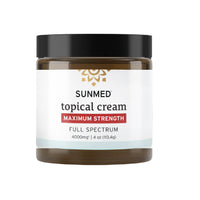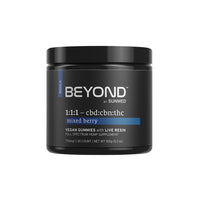What is shatter? How is it made?
Discover what shatter is, a potent cannabis concentrate known for its glass-like texture, with this guide from Sunmed.

Cannabis concentrates have surged in popularity among both recreational users and medical patients seeking potent and efficient forms of cannabinoids. Among these concentrates, shatter stands out for its distinctive glass-like appearance and high potency.
This article dives into what shatter is, the various cannabis compounds it contains, and the meticulous manufacturing process that achieves its unique consistency.
What is shatter?
Shatter is a type of cannabis concentrate known for its brittle, translucent, and glass-like texture.
Unlike traditional cannabis flowers, which consist of plant material, shatter is a purified extract that contains concentrated cannabinoids, terpenes, and other beneficial compounds. Its name derives from its ability to "shatter" or break apart easily, resembling glass when handled.
Shatter typically boasts high levels of tetrahydrocannabinol (THC), the primary psychoactive compound in cannabis, making it significantly more potent than regular cannabis flower. However, shatter can also be formulated to contain cannabidiol (CBD) and other cannabinoids, catering to both recreational and medicinal users seeking specific therapeutic effects.
What to know about shatter’s composition
As a particularly potent cannabis concentrate, it’s helpful to better understand its composition. Here’s a closer look:
Cannabinoids
Cannabinoids are the active compounds in cannabis responsible for its various effects. The most prominent cannabinoids found in shatter include:
- Tetrahydrocannabinol (THC): The primary psychoactive component that induces the "high" associated with cannabis use. THC interacts with the body's endocannabinoid system, particularly the CB1 receptors in the brain, influencing mood, pain perception, and appetite.
- Cannabidiol (CBD): A non-psychoactive cannabinoid known for its potential therapeutic benefits, including soothing, calming properties. CBD interacts with both CB1 and CB2 receptors, as well as other receptor systems, offering a wide range of health benefits without inducing intoxication.
- Other Cannabinoids: Shatter may also contain minor cannabinoids such as cannabinol (CBN), cannabigerol (CBG), and cannabichromene (CBC), each contributing to the entourage effect — a synergistic interaction that enhances the overall therapeutic potential of the concentrate.
Terpenes
Terpenes are aromatic compounds found in cannabis that contribute to its distinct flavors and scents. They also play a crucial role in modulating the effects of cannabinoids through the entourage effect.
Common terpenes in shatter include:
- Myrcene: Earthy and musky, known for its relaxing effects.
- Limonene: Citrusy and uplifting.
- Pinene: Pine-like aroma, believed to support focus.
- Caryophyllene: Spicy and peppery, with soothing properties.
- Linalool: Floral scent, known for its calming effects.
The precise terpene profile in shatter can vary depending on the cannabis strain and the extraction process, influencing the concentrate's overall aroma and effects.
How is shatter made?
Creating shatter involves several steps designed to extract and purify cannabinoids and terpenes while achieving its characteristic glass-like consistency. The primary methods used are solvent-based extraction and post-extraction purification.
1. Solvent-based extraction
The first step in producing shatter is extracting cannabinoids and terpenes from the cannabis plant. This is typically achieved using hydrocarbon solvents such as butane, propane, or CO2.
Here's how the process works:
- Preparation: High-quality cannabis flowers are selected for their cannabinoid and terpene content. The flowers are dried and cured to optimize the extraction process.
- Extraction: The prepared cannabis is exposed to the chosen solvent, which dissolves the cannabinoids and terpenes. This forms a solution rich in these compounds.
- Separation: The solvent is then separated from the cannabinoid-rich solution. This can be done using various techniques, including evaporation or filtration, to ensure that only the desired compounds remain.
2. Winterization and purging
To achieve the pure and clean consistency of shatter, further purification steps are carried out:
- Winterization: This process removes unwanted compounds such as fats, waxes, and lipids that may be present in the extract. The cannabinoid solution is mixed with ethanol and cooled to precipitate these impurities, which are then filtered out.
- Purging: After winterization, the concentrate still contains residual solvents. Purging involves using vacuum ovens or rotary evaporators to remove these solvents completely. This step is crucial for ensuring the safety and purity of the final product.
3. Crystallization and formation
The purified cannabinoid and terpene solution undergoes controlled cooling to induce crystallization, forming the solid shatter.
The solution is slowly cooled in a controlled environment to promote the formation of uniform crystals. The temperature and rate of cooling are meticulously regulated to achieve the desired glass-like consistency.
As the solution cools, cannabinoids begin to crystallize, solidifying into the brittle texture characteristic of shatter. The crystallization process is carefully monitored to prevent the formation of unwanted crystal sizes or shapes.
How does shatter compare to other concentrates?
Shatter is one of several cannabis concentrates available, each differing in texture, potency, and extraction methods.
Here's how shatter compares to other popular concentrates:
- Wax: Wax is another type of cannabis concentrate known for its soft, pliable texture. Unlike shatter, which is brittle, wax can be easily manipulated with a dab tool. Wax is often achieved through whipping or agitating the extract during the purging process, leading to its creamy consistency.
- Live Resin: Live resin is a concentrate made from fresh, frozen cannabis plants, preserving a higher terpene content compared to other concentrates. It offers a more flavorful and aromatic experience but is generally less brittle than shatter.
- Rosin: Rosin is a solventless concentrate produced by applying heat and pressure to cannabis flowers or hash. It retains a high level of terpenes and cannabinoids but lacks the glass-like consistency of shatter.
- Budder: Budder is similar to wax but has a smoother, butter-like texture. It is created by agitating the extract during purging, resulting in a creamy consistency that is easier to handle than shatter.
Each concentrate offers unique benefits and experiences, catering to different preferences and needs among cannabis consumers.
What are the risks of shatter?
While shatter offers numerous benefits, it also comes with potential risks and considerations that users should be aware of:
1. High potency
The high THC concentration in shatter can lead to intense psychoactive effects, which may be overwhelming for inexperienced users or those sensitive to THC. Symptoms of overconsumption can include anxiety, paranoia, dizziness, and impaired coordination.
2. Respiratory health concerns
Dabbing or vaping concentrates like shatter involves inhaling vaporized compounds, which can irritate the lungs and airways. Chronic use may contribute to respiratory issues such as bronchitis or other lung-related problems.
3. Tolerance
Regular use of high-potency concentrates can lead to the development of tolerance, requiring users to consume larger amounts to achieve the same effects. This can increase the risk of dependence and associated health issues.
4. Legal and regulatory issues
The legality of shatter varies by region. In areas where cannabis is legalized, shatter is typically regulated similarly to other concentrates.
However, in places where cannabis remains illegal, possession and distribution of shatter can result in severe legal consequences. Users should be aware of and comply with local laws regarding cannabis concentrates.
5. Quality control
Not all shatter products are created equal. Poor manufacturing practices can result in concentrates contaminated with residual solvents, pesticides, or heavy metals.
Ensuring that shatter is sourced from reputable manufacturers who provide third-party lab testing is crucial for safety and quality.
The bottom line
Shatter is a potent and refined form of cannabis concentrate, well-known for its high cannabinoid content and glass-like consistency.
However, using shatter isn’t without risks — its high THC concentration can lead to overwhelming psychoactive effects, and the inhalation methods used for consumption pose potential respiratory health concerns. Additionally, the legal status of shatter varies, so it’s important to be careful of local regulations.
As with any cannabis or hemp product, responsible use is key. Aim to prioritize high-quality, lab-tested shatter from reputable sources, start with low serving sizes to assess tolerance, and consult with healthcare professionals if you’re using cannabis for medical purposes.
*This statement has not been evaluated by the Food and Drug Administration. This product is not intended to diagnose, treat, cure, or prevent any disease.
Sources:
What are Cannabis Concentrates? | HRB National Drug Library
Cannabinoids and Pain | Frontiers in Pharmacology
The Dangers of Smoking Highly-Concentrated Marijuana Wax | Oxford













